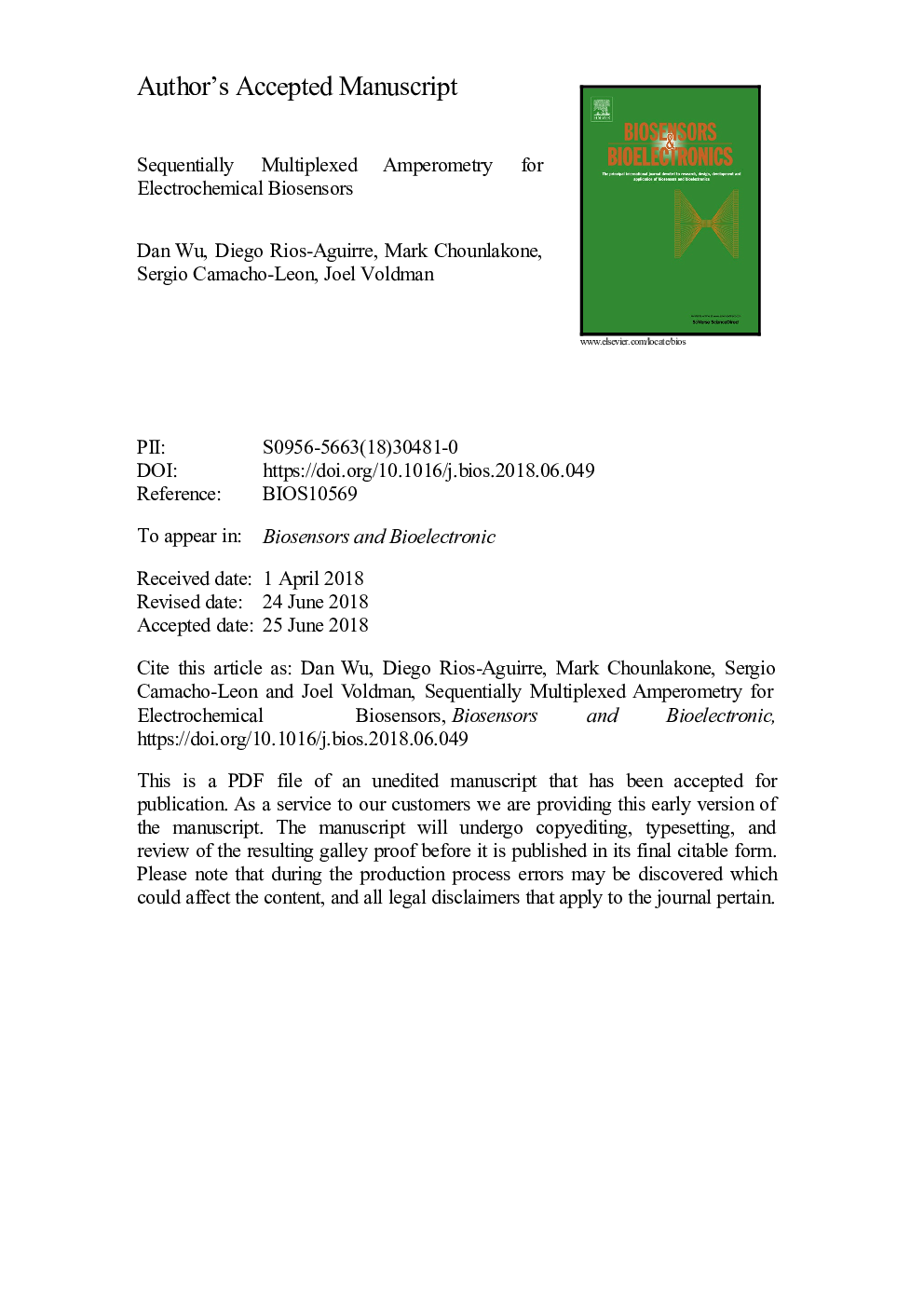| Article ID | Journal | Published Year | Pages | File Type |
|---|---|---|---|---|
| 7229084 | Biosensors and Bioelectronics | 2018 | 18 Pages |
Abstract
Multiplexed electrochemical biosensors are intriguing due to their capability to permit high-throughput and low-cost assays. While commercial single-chip potentiostats are one promising approach for rapidly prototyping portable and low-cost electrochemical biosensors, it is still challenging to utilize them to achieve parallel multiplexing due to the limited resources integrated onto the chips. In this paper, we provide a methodology for incorporating multiplexing into commercial single-chip potentiostats by using a sequential architecture. In the sequential architecture, the multiplexed biosensors are interfaced to the single-chip potentiostat via single-pole single-throw switches, and the measurements alternate across the sensors. We build analytical and finite element models to investigate the behavior of the sensors, particularly when they are disconnected from the potentiostat, and find that we can take advantage of the dynamics of the sensors to achieve improved sensitivity over conventional chronoamperometry. We also investigate and compare different strategies to interface the multiplexed sensors to the single-chip potentiostat. Using the proposed multiplexing architecture, we demonstrate the implementation of 16-fold multiplexed amperometry, which is validated using ferricyanide measurement. Finally, the sequential multiplexing methodology is applied to a multiplexed bead-based electronic enzyme-linked immunosorbent assays of human interleukin-6.
Keywords
Related Topics
Physical Sciences and Engineering
Chemistry
Analytical Chemistry
Authors
Dan Wu, Diego Rios-Aguirre, Mark Chounlakone, Sergio Camacho-Leon, Joel Voldman,
